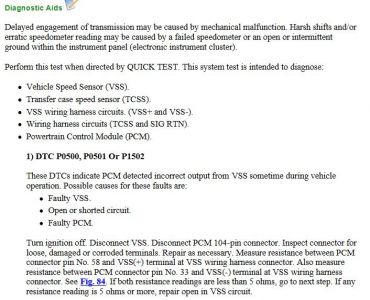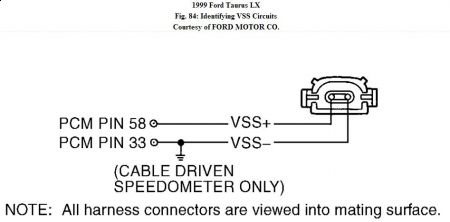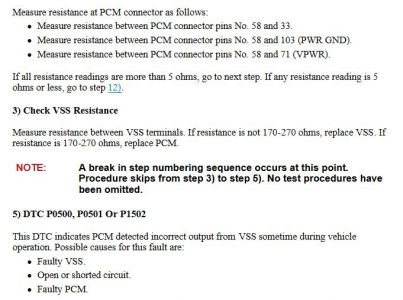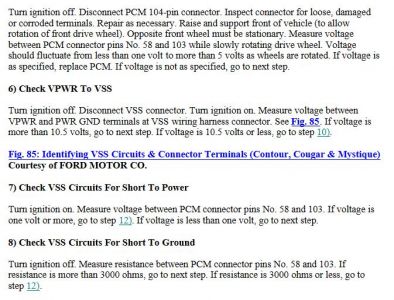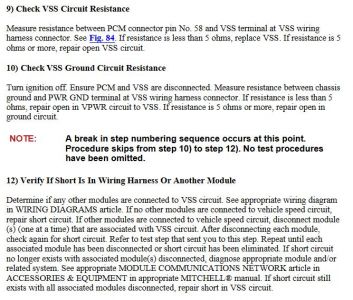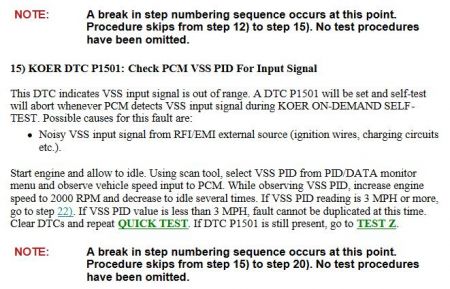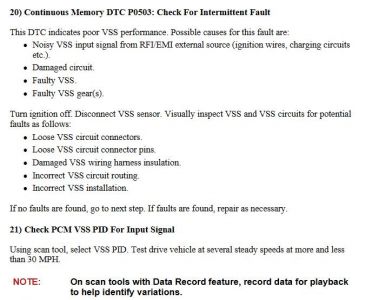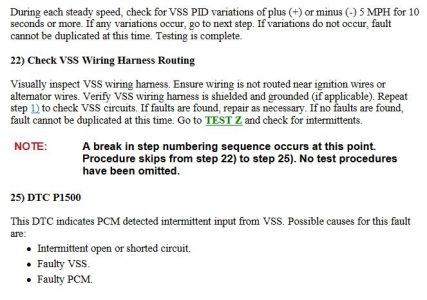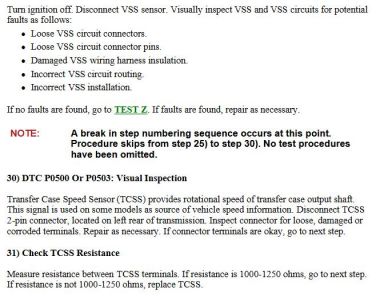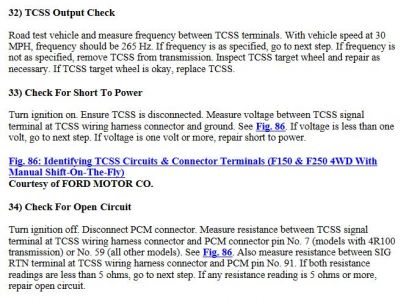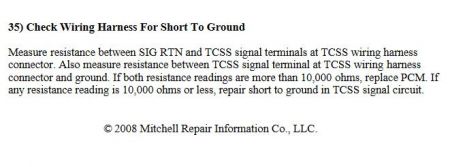Here is more info on the probable failure of the tranny.
The Ford AX4S automatic transmission is a four-speed electronic overdrive transmission used in 1995 to 2000 Ford Windstar minivan. The transmission is also used in 1991 to 2003 Ford Taurus and Mercury Sable, and 1993 to 1995 Ford Taurus SHO models. The AX4S is a second-generation version of the AXOD and AXOD-E transmissions used in 1986 to 1991 Ford Taurus.
The AX4S transmission still shares the same AXOD end cover as the older AXOD transmissions, which makes identification somewhat confusing, but it saved Ford the cost of retooling the cover. The transmission also has a 17-bolt pan on the bottom, which is different from the 19-bolt pan used on the newer AX4N transmission that replaced the AX4S in 2001 on the Windstar.
The reliability of the AXOD, AXOD-E and AX4S transmissions has been very poor, with transmission failures at relative low mileage (60,000 to 100,000) being fairly common. According to the Center for Auto Safety, the failure rate for these transmissions has been significantly higher than that for most other automatic transmissions.
The high failure rate has been blamed on inadequate internal lubrication of critical parts, and a weak forward clutch piston that cracks and leaks pressure. Ford scrimped on the forward clutch piston, making it out of cast aluminum until 1995, when they switched to a steel part due to all the trouble they were having with this transmission.
Ford TSB 94-24-7 covers replacement of this piston with a stronger steel piston.
Ford has so much trouble with the earlier versions of this transmission that in 1995 it extended the warranty on 1991 Taurus transmissions to six years or 60,000 miles. That's ancient history now, and the Windstar transmissions were only covered by the standard powertrain warranty.
INTERNAL PARTS
The AX4S transmission contains two planetary gearsets and a combination planetary/differential gearset. The operation of the planetary gearsets is controlled by four multiple-plate clutches, two band assemblies and two overrunning clutches. Hydraulic pressure is provided by a variable displacement pump driven by the torque converter.
The transaxle has a large chain drive on the driver side end under the cover with AXOD stamped on it. There are also three hydraulic accumulators, one for neutral/drive, one for 1st and 2nd gear, and one for 3rd and 4th gear (overdrive).
There is also a thermostatic fluid control valve inside the transmission that compensates for fluid expansion as the fluid gets hot. When the fluid is cold, it routes more fluid to the main control body. As the fluid heats, up the valve slowly opens to allow some of the fluid to drain back to the sump. This helps keep the fluid level below the rotating parts of the transmission so it doesn't foam and become aerated (which can cause erratic transmission performance).
ELECTRONIC CONTROLS
The transmission is controlled by the powertrain control module (PCM), using inputs from the transmission sensors, vehicle speed sensor and other engine sensors. Key components include:
The Transmission Control Switch (TCS) is on the end of the gearshift lever, and is used to turn overdrive on and off. For normal driving, leave the transmission in overdrive. If the TCS button is pressed, the PCM will turn on the Transmission Control Indicator Lamp (TCIL), which is the O/D OFF overdrive light. This will prevent the torque converter from locking up or the transmission from going into 4th gear while driving. This increases available torque but also reduces fuel economy.
NOTE: If the overdrive light is flashing, it means the PCM has detected an internal electronic fault in the transmission. Some people call this the "sell or trade this vehicle now" light because it usually means the transmission is failing.
Turbine Shaft Speed Sensor.
The Turbine Shaft Speed (TSS) Sensor is a magnetic pickup that monitors the input speed of the turbine shaft for the torque converter. The computer uses this information to control torque converter clutch lockup and internal transmission operating pressures.
The Output Shaft Speed (OSS) Sensor is another magnetic sensor that monitors the speed of the transmission output shaft. This signal is also used to control the torque converter clutch, gear shifting and internal pressure.
Shift Solenoids SSA, SSB and SSC control the operation of the three shift valves. The solenoids are located in the main control valve body, and are two-way, normally open solenoids.
The Transmission Fluid Temperature (TFT) Sensor, located on the main control body, monitors the temperature of the fluid. The PCM uses fluid temeprature to modify the shift characteristics of the transmission when it is cold.
The Electronic Pressure Control (EPC) Solenoid controls the hydraulic pressure inside the transmission by balancing the line pressure against the modulator pressure. The PCM has an adaptive strategy that allows it to modify the shift characteristics over time for smoother operation. If the battery is disconnected, these learned settings go away and the PCM has to start all over again, which may cause harsher shifts for several hundred miles until the PCM sorts things out again.
The Torque Converter Clutch (TCC) Solenoid controls the lockup and release of the torque converter clutch. Problems here can make the transmission feel jerky at low speed if the torque converter locks up too soon or fails to release soon enough, or cause a drop in fuel economy if the converter never locks up.
GEAR SHIFTS
The PCM controls the upshifts and downshifts of the transmission based on vehicle speed, load and engine rpm. The transmission will downshift to a lower gear when the vehicle is slowing down, when an increase in the load on the transmission requires a higher gear ratio (as when driving up a steep hill), or when the accelerator pedal is floored (kickdown).
If the transmission downshifts harshly gong from 3rd to 2nd gear, or shudders when accelerating around a corner, the problem may be air in the transmission fluid caused by a low fluid level. Ford TSB 99-18-4 covers this problem and says the fix is to check the fluid level (after the vehicle has been driven, the fluid is hot, and the engine is idling in Park), and add fluid as necessary to bring the fluid level up to the full mark.
FLUID TYPES
The type of automatic transmission fluid (ATF) used in these transmissions is very important for proper transmission operation. Always refer to your owner's manual or the marks on the dipstick for the type of fluid to use. Up to 1998, the AXOD, AXOD-E and AX4S transmissions require Mercon ATF. Starting in 1998, all Taurus and Sable vehicles require the newer Mercon V fluid. On 1998 Windstar models built prior to 9/9/2007, regular Mercon is specified, while those built after this date require the newer Mercon V fluid. Ford warns that using wrong fluid or a fluid that does not meet their Mercon or Mercon V specifications can cause transmission problems and possible transmission failure.
TRANSMISSION DIAGNOSIS
Transmission diagnosis is usually not a job for a do-it-yourselfer. It takes expertise and special equipment to properly diagnose a transmission problem. Here is Ford's recommended procedure:
1. Check the transmission fluid level. Many problems such as slipping, slow engagement and erratic or sloppy shifts can be caused by a low fluid level. If low, add the proper fluid to bring the level up to the full mark. Also inspect the transmission for leaks, and fix as needed to prevent fluid leaks.
2. Check the harness connectors for proper installation at the Transmission Range (TR) sensor, Turbine Shaft Speed (TSS) sensor, Output Shaft Speed (OSS) sensor, and transaxle top connector.
3. If the Check Engine Light is on, connect a scan tool to the vehicle diagnostic connector and check for any transmission-related fault codes.
4. If the Check Engine Light is OFF, and there are no fault codes, go to Step 5. If fault codes are present, refer to the appropriate Ford diagnostic charts and perform the required step-by-step checks to isolate the problem.
5. If the transmission is still having a problem, connect a Ford Transmission Tester (Rotunda 007-00085) and follow the appropriate tester instructions to determine if the problem is internal. Essentially, this involves checking internal transmission pressures and the operation of the various sensors and control solenoids.
TRANSMISSION FAILURE
Based on the poor reliability record of the AXOD, AXOD-E and AX4S transmissions, problems such as slipping when driving at a steady highway speed, harsh shifts or erratic shifts, transmission noises, etc. Usually mean your transmission is failing and repairs will soon be necessary. In most cases, that usually means replacing the transmission with a rebuilt unit.
An early symptom is often a noticeable change in engine rpm of 200 to 300 rpm while driving at highways speeds in overdrive. This is often due to the transmission losing lockup pressure.
Replacing a transmission on a Windstar or other front-wheel drive Ford is a difficult job, taking 8 to 12 hours depending on the skill level of the person doing the job, and how much trouble they run into with old, rusty fasteners. The engine has to be supported from above while the transmission and lower suspension components are unbolted and lowered to the ground. A rebuilt transmission nowadays typically costs $1500 to $1950 or more depending on where you get it, but I have seen rebuilt AX4S transmissions advertised on ebay for as little as $600 to $850, plug shipping (add another $150 to $250 plus a core deposit of $300 or more for your old transmission).
My advice if you need a transmission is to deal with a reputable transmission shop, independent repair garage or Ford dealer who will guarantee their work. A quality rebuilt transmission should come with a two year or longer warranty. The total job should not cost more than $2200 to $3000 (the price will vary depending on the shop's hourly labor rate, and the cost of the rebuilt transmission).
Hope this was Helpfull
.
Thursday, May 28th, 2009 AT 9:42 PM
